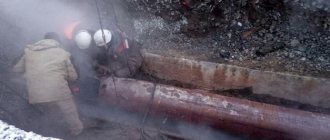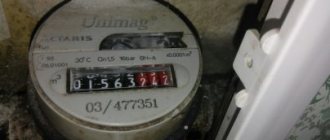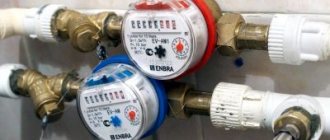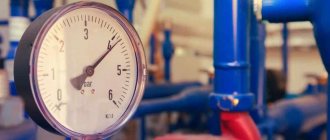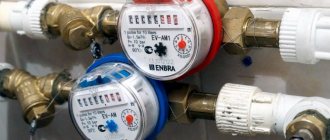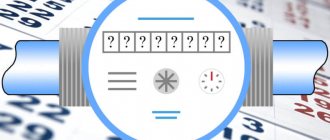Why do all houses have communal water meters?
A water meter is a device that is used to track or measure the use of water supplies by a consumer in a given location.
Utilities use water meters on sites for both commercial and residential customers and charge based on the devices' measurements.
Consumers sometimes also use a water meter as a means of tracking their own usage, with the goal of reducing wasteful use of the resource. This is especially true when an area experiences droughts and pressure on local water supplies increases.
The actual design of a water meter often depends on the type of customer that will be served by the device. With residential customers, many public water works and boards prefer a simplified design that measures the flow of water from the municipal water system into the home.
When the tap is opened, the meter records the incoming water flow as a specific measurement. This measurement can then be converted into a cost using a usage table.
In past times, the typical example was for an employee to physically visit each residence, record the readings for the month, reset the meter to zero, and report the results for billing purposes.
Some communities no longer conduct regular site visits but use water on an average basis, collected several times a year. Water meter designs that use computer technology to transmit usage data to a central office and upload it to a billing database are increasingly being used around the world.
This allows you to secure real-time data for billing without requiring a lot of manual labor and also helps improve the accuracy of the billing process.
The main difference between a common house meter is the fact that it accumulates information about the total amount of water consumed (for example, from the entrance). This makes it easier for utility companies to calculate the consumption required for the common needs of residents - basement, attic, shared kitchen, etc.
Types of communal meters
In total there are:
- Multi-jet wet type.
- Multi-jet dry type.
- Turbine.
- Combined.
- Combined with bypass line.
In apartment buildings and private buildings, multi-jet dry type communal water meters are used. Turbine water meters with flange mounting to a common pipe are also used. The following characteristics are required:
- Diameter of at least 40-150 millimeters.
- Availability of a dry ship.
- The presence of an impeller or turbine.
- Designed for cold and hot water.
- Equipped with heat-resistant materials.
- The presence of a rotary counting mechanism.
- High-quality shut-off valves.
- Ability to monitor water flow remotely (if possible).
- Possibility of calibration and simplified installation.
Such devices must be sensitive to the temperature of the water passing through the pipes. Their meanings are indicated in the relevant norms of Russian law. If the readings are below 40 degrees Celsius, then the flow of hot water is taken into account along with cold water.
The price category depends on the type of device, its purpose, type and form of data storage. The choice is made on the basis of federal, regional, local legislation, as well as taking into account the opinions of home owners.
Meter installation and pricing
The cost of installation depends on:
- on the number of homeowners and the presence of commercial organizations in the house,
- the presence/absence of a separate line for cold and hot hydraulic flow, which implies the need,
- input diameter,
- complexity of equipment and installation work,
- pipeline wear and other factors.
For a common house cold and hot water meter, the average purchase and installation price is about 100-150 thousand rubles, and the amounts can vary from 60 to 300 thousand rubles.
Installation of a common house cold and hot water meter is carried out in compliance with the procedural rules and capabilities:
- Since the management company does not have the right to install a meter without the knowledge of the resident, all of them must be informed as fully as possible about the feasibility of this procedure. As a rule, this happens at a general meeting, where, in addition to explanations about the installation procedure and the features of the water meter, contractor options are offered.
- In a HOA, when voting, a decision is considered adopted by a majority of votes, while opponents of the decision still become participants in the collection of funds.
- Owners can independently choose the company that offers the most favorable working conditions. Most often, such a company asks to provide signed applications for the installation and acceptance of hydroflow metering devices.
- House management representatives can offer payment options: through direct fundraising,
- allocating funds from the capital repair fund (the most common method),
- by concluding an agreement with a resource supply company on the purchase and maintenance of a meter with installment payments.
In the event of a complete refusal to purchase a common house meter, the organization initiating the process may submit a statement of claim to the court. In most such cases, the court imposes penalties on the plaintiff and orders the purchase of a communal meter. The management company also faces penalties if it fails to notify the owners of the need to purchase an accounting device.
Installation procedure
Authorized employees receive instructions from the organization's management to install a water meter. This information with employee signatures will be stored in separate folders in the company office. Then the following steps are required:
- Authorized persons inspect the premises and related facilities before installing the device.
- Then the device is installed and sealed.
- They issue an act.
- Check functionality.
- Leave the installation site.
After completing the work, the craftsmen submit acts and other documents to a special department of the Criminal Code or Housing Office. The papers are filed and especially important parameters are entered into the general database.
When installed by residents themselves, the steps are almost the same. You do not need to submit any documentation. Maintenance is performed at your own risk.
Whose responsibilities include installation of ODPU
As in any matter related to the provision of public services, there are responsible persons, that is, those who must install communal meters in an apartment building.
To determine the answer to this question, you need to take into account the deadline specified in the legislation - July 1, 2012. Until this moment, the responsibility for installing ODPU lay with the owners of the premises. After this date, responsibility passed to the service organizations. It is they who will be fined for failure to comply with the requirements of the law.
The maintenance company informs residents in advance of the conditions and procedure for installing the devices, and after that enters into an agreement with the company that installs the meters.
Sequence of actions when installing ODPU
Only enterprises that have the necessary permits, knowledge and tools should install heating equipment, since this process is quite labor-intensive.
To install the meter you need to go through the following steps:
- Making a decision on the need to install ODPU.
- Selecting the organization that will carry out the installation of the device.
- Determining the installation location of the ODPU and inspecting it.
- Obtaining technical conditions for installing the device. You can obtain such papers from the resource supplier company.
- Development and approval of design and estimate documentation for meter installation. This is what the design organization does.
- Drawing up and coordination of papers with the resource supplier.
- Purchase of equipment.
- Installation of a common house meter.
- Startup and configuration work.
Who takes readings from a common house water meter?
Taking readings is possible in 2 cases:
- These actions are carried out by the residents themselves after self-installation. The amount must be distributed among all owners of real estate.
- These actions are carried out by authorized employees of the management company or housing office. After they are entered into the database and approved, citizens are sent invoices for payment.
If a citizen (or several people) felt that the numbers were incorrect, then he or they have the right to file a complaint with the organization’s management. Otherwise (in case of illegal actions or inactions) of employees, residents can file a claim in court.
Pay-per-consumption principle
Residents themselves pay for the total water consumption in equal shares. The total amount is indicated on monthly receipts. It cannot be divided into parts or paid in installments. If a citizen accumulates a debt in the amount of the full amount for 1-2 months, then authorized employees have the right to charge fines and late fees.
These accrued amounts are required to be paid. If the requirements are not met, the citizen may be sued. The debt will be assigned by court order, to the amount of which court costs and examination fees (if necessary) will be added.
Verification of communal meters
Verification of common house metering devices is mandatory.
Rules and requirements are established at the federal and regional level, as well as by internal documents of the organization. To carry out any actions on the part of the management company or housing office employees, schedules must be drawn up.
Only authorized employees have the right to carry out verification. Otherwise, penalties will be imposed on the culprit. If the residents installed the device themselves, then they take full responsibility for maintenance.
Why can’t you pay for common house metering devices from the budget for the current repairs of apartment buildings?
Since such devices are installed by an authorized organization, payment is made in equal shares from all residents in the entrance. The amount is indicated on receipts by company employees. These funds are used to pay for the equipment and its installation.
MKD - several apartment buildings with several owners. Often, funds collected for major repairs cannot be used to install a meter. This is due to the fact that money is often distributed across different budgets (depending on the number of owners) - federal, regional and local.
When paying for services it matters:
- Installment payments for installation (maximum period – 5 years).
- A residents' meeting is not necessary.
- If a special program is available, the device can be installed free of charge.
The practical need to install a common house water meter
The installation of building-wide water meters is relevant both for management companies and homeowners associations, which pay for the consumed resource with the supplier, and for individual consumers, even despite the presence of apartment metering devices in their house. In this case, it should be understood that in addition to individual water consumption, there are also costs for general house needs (CHO): watering lawns, cleaning the territory, etc. In addition, the problem of leaks also does not disappear anywhere and is relevant for many objects. But if a water meter is installed, then monitoring the actual water consumption in the house is not a problem, and the issue of resource losses during transportation completely falls within the competence of the supplying organization and is attributed to their losses. However, the problem of leaks in the house is also quite relevant, but if you have a meter, it is much easier to detect it, for example, by paying attention to a sharp increase in water consumption in the house. And most importantly, if there is a water meter, payment is made for the actual amount of water consumed, while general house consumption is distributed proportionally, in accordance with the area of the residents’ apartments. On average, general house water consumption for each apartment is plus 1.5-3% of individual consumption.
A common house water meter allows you to:
- organize effective accounting of water consumption;
- quickly identify leaks and, depending on the location of their occurrence, residents have the right to compensation from the management company or resource supply organization;
- Pay only for the actual amount of water consumed.
Is it necessary to hold a general meeting of owners?
Holding a general meeting of homeowners is the legal right of Russian citizens.
People can gather independently or upon the decision of the management company, housing office or HOA manager. Minutes must be kept at this meeting and signed by interested parties. After signing (stamping) you can give the document for installation of equipment.
They can install a communal meter without a meeting of residents. Authorized employees are sent by the management of the service company to put the ODPU into operation. You can also carry out these actions upon receipt of 1 or 2 applications from citizens.
This procedure is due to the fact that such organizations perform certain duties. These include monitoring and control of the common area and property, as well as making timely changes - eliminating breakdowns and defects, changing metering devices, etc.
Who pays for the installation of ODPU
Who pays for the general income tax in an apartment building is the most pressing question in the whole event. And, sad as it may be for ordinary people, the answer is obvious.
Since metering devices are installed in an apartment building, and installation is the responsibility of the owners of the premises, the payment falls squarely on the shoulders of consumers.
Since, in accordance with the law, ODPU must already be installed in apartment buildings, this issue is becoming increasingly relevant. Let's find out some of the nuances of how payment is made for the installation of a common house heat meter and other types of utilities.
General meeting of owners
The first step that needs to be taken to install the ODPU is to hold a general meeting of homeowners. The fact is that the house, all its apartments and utility rooms are the common property of the residents, which means that it is they who will have to solve the main problems:
- when to install meters;
- where they will be located;
- how to prepare documents;
- what is the price of the issue?
The role of the management organization in the process is simple: it informs the owners about the need to hold a general meeting. In addition, by the time such a meeting is held, an adequate management company will already have some proposals for organizing the process.
However, in accordance with Art. 9.16 clause 5, regulatory authorities can fine management companies that avoid notifying residents about energy saving measures.
In order to avoid being subject to a substantial fine, the management company must not only notify residents about the meeting, but also justify the need to install the devices and provide all possible assistance.
How is the installation of ODPU paid?
You can pay for the installation of ODPU in the following ways:
- Pay 100% of the cost of services immediately. This can be done before installing the meter and immediately after it.
- Take advantage of installments for five years. The installation bill will be included in equal installments on your utility bills for five years. At the same time, you will have to pay interest for using the installment plan, which is equal to the refinancing rate established by the Central Bank (7.25%).
- Take advantage of your utility provider's energy efficiency funds. These funds are accumulated as follows: if there are installed meters, and their consumption is less than the standard, then the difference goes to a special account, and the money is spent exclusively on measures to improve energy efficiency.
If tenants don't pay
Often, homeowners categorically oppose the installation of ODPU, citing the presence of individual metering devices.
The law does not leave an opportunity to evade paying for the installation of the device: if the owners do not want to do this, the devices will be forced to be installed at the expense of the utility provider.
In accordance with the provisions, all expenses of the resource supplying organization for the installation of ODPU are paid by the owners. In case of refusal, the money will be forcibly collected from them.
Why can’t you pay for the installation of the ODPU from funds for current repairs?
Current repairs are a mandatory preventive measure that ensures the normal functioning of utility systems and the entire house as a whole. Misuse of funds intended for repair activities may disrupt the operation of one of the systems.
Officials understand: if funds for routine repairs are spent on installing an emergency control system, and an accident occurs in the house, then criminal cases may be brought against them for negligence and abuse of authority. No one will take on such responsibility, especially since homeowners are required to pay for the installation of meters.
Although the law provides for the possibility of using funds to install metering devices if the house is in satisfactory condition, in practice no one will take such a step.
We recommend that you learn more about at whose expense electricity meters should be changed.

